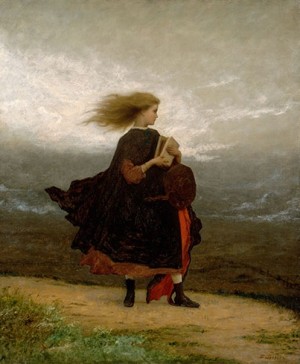Embers of War Still Flickering at the Met
When Abraham Lincoln was elected the 16th President of the United States in November 1860, frayed stitching held the nation’s fabric in place. By December, the divide between North and South grew ever wider when South Carolina seceded from the Union and urged other planter states to join in, creating a new confederacy free of overreaching Northern influences.
By December 27th, South Carolina troops seized Fort Moultrie — a historic federal military installation situated on Sullivan’s Island in Charleston Harbor. Union troops, under the leadership of Major Robert Anderson, relocated to the adjacent Fort Sumter, but to Northerners there wasn’t a doubt that the South was no longer blustering in their threats. War hung heavy in the winter sky, suffocating Northerners and Southerners alike under a tight blanket of despair.
By early February, Alabama, Florida, Georgia, Louisiana, Mississippi and Texas joined South Carolina in seceding and elected Jefferson Davis as President of the Confederate States of America. Two months later, South Carolina troops bombarded Union troops at Fort Sumter, and Major Anderson lowered the Union flag.
War was on.
In five bloody years, over 620,000 brothers, fathers and sons lost their lives in conflicts, battles and skirmishes primarily set in the Arcadian landscapes of the South. Much of the devastation was captured on canvas, wood engravings, and paper by forerunners of today’s embedded war correspondents and photojournalists.
Marking the 150th anniversary of the Battle of Gettysburg this July, New York’s Metropolitan Museum of Art has curated The Civil War and American Art, running through September 2, 2013. It is a stunning collection of over 90 paintings and photographs between 1852 and 1877 by some of America’s most well-regarded 19th century artists, including Winslow Homer, Frederic E. Church, Sanford R. Gifford, Timothy H. O’Sullivan, and George N. Barnard. From beginning to end, the emotional gravitas of the landscapes, faces, battle scenes and aftermath of America’s bloodiest war seeps into the subdued gallery spaces — haunting the present with lessons from the past.
The exhibit is arranged chronologically, creating the sense that you are walking through a history book. The audio guide (well worth the money) provides a soundtrack to your journey, with animated voices, music, and sounds of the times. Entering the world of the 1860s, you wander from painting to painting as if strolling down a shop-laden street and are drawn immediately to Our Banner in the Sky (1861) by Frederic E. Church (1826-1900). In the foreground, a bare tree trunk serves as a flagpole for Old Glory unfurling across the sky in brilliant red stripes with a patch of blue sneaking through. A sprinkling of stars blinks as the sun melts into the horizon. Remarking on the Fort Sumter siege, Henry Ward Beecher declared, “A thoughtful mind, when it sees the nation’s flag, sees not the flag, but the nation itself.” Memorialized by Church’s painting, Major Anderson and his Fort Sumter flag were epitomized as the rallying call to recruiting patriots for the Union cause — America at war with itself, but the nation and her flag still standing tall.
In an adjoining room, walls are filled with works by Confederate artists, most of whom received paltry attention after Union victory, despite their master craftsmanship. And if there is but a criticism, it seemed somewhat strange to be in a Northern institution of art and culture and discover these unassuming, yet brilliantly executed paintings hung alone — as if the great divide from 150 years ago still simmered in the heart of Manhattan.
And the star of this wing could have hung proudly next to Winslow Homer (1836-1910) — more to come on his stunning works. Confederate General Pierre Gustave Toutant Beauregard, charged with fortifying Charleston Harbor, enlisted a young Conrad Wise Chapman (1842-1910) to sketch the city’s defenses. Chapman created a collection of 31 paintings, including several in which the Confederate flag waves from atop Fort Sumter — and would until Major Anderson returned on April 14, 1865 and raised his original American flag to full mast once again. Chapman’s skies are reminiscent of those of the Hudson River School — ethereal, pulsating hues of citrine yellows, tangerine oranges, azure blues and dusty purples, as if the glowing hand of God were reaching down to humanity.
Americans perhaps most identify Homer as an artist of raging seascapes. But long before he painted sailboats and rough waters, he was a war correspondent for Harper’s Weekly. Unlike many artists painting and sketching the war, Homer was never active in battle. He spent much of his time at camp, depicting the life of a soldier as monotonous and plagued with forlorn isolation. At first he produced wood engravings, including one depicting a sharpshooter, which served as a sketch for his realistic painting entitled, Sharpshooter (1863). It hangs directly across from Church’s Our Banner in the Sky, connecting a call to action with action itself. Homer’s palette is dark, rich earthen tones: sepia, burnt umber, rust, and moss green, with a weathered blue sky lighting the background, as the Union soldier perches on a pine branch high in the treetops, one hand steadying the barrel, the other poised to pull the trigger.
(Article continued on next page)

